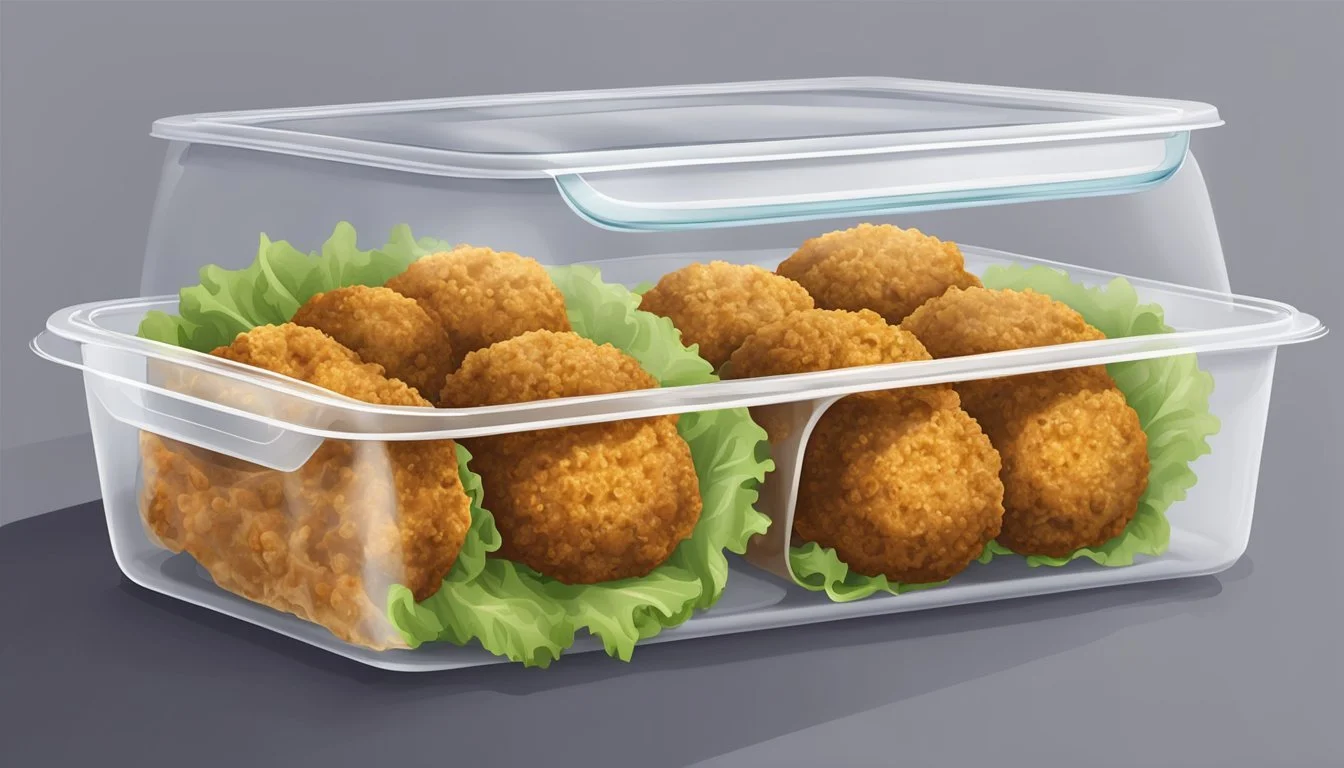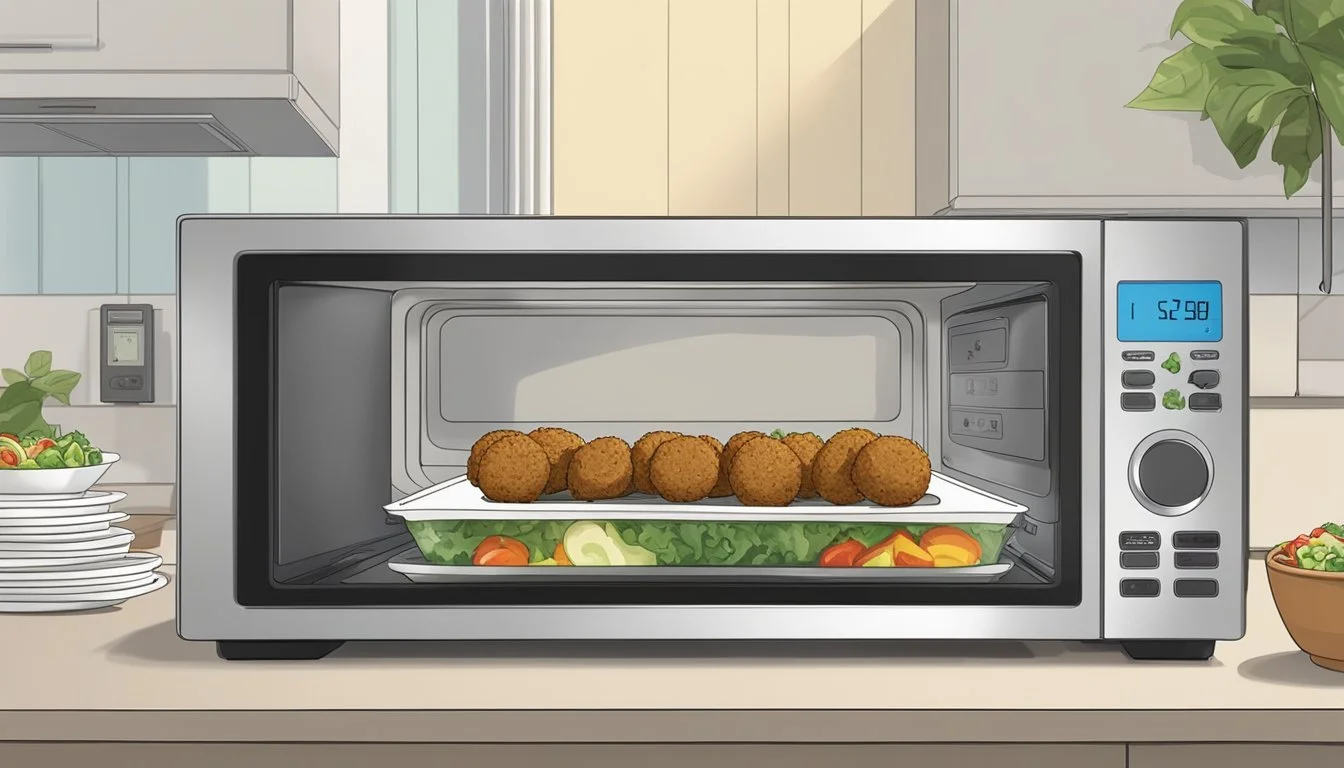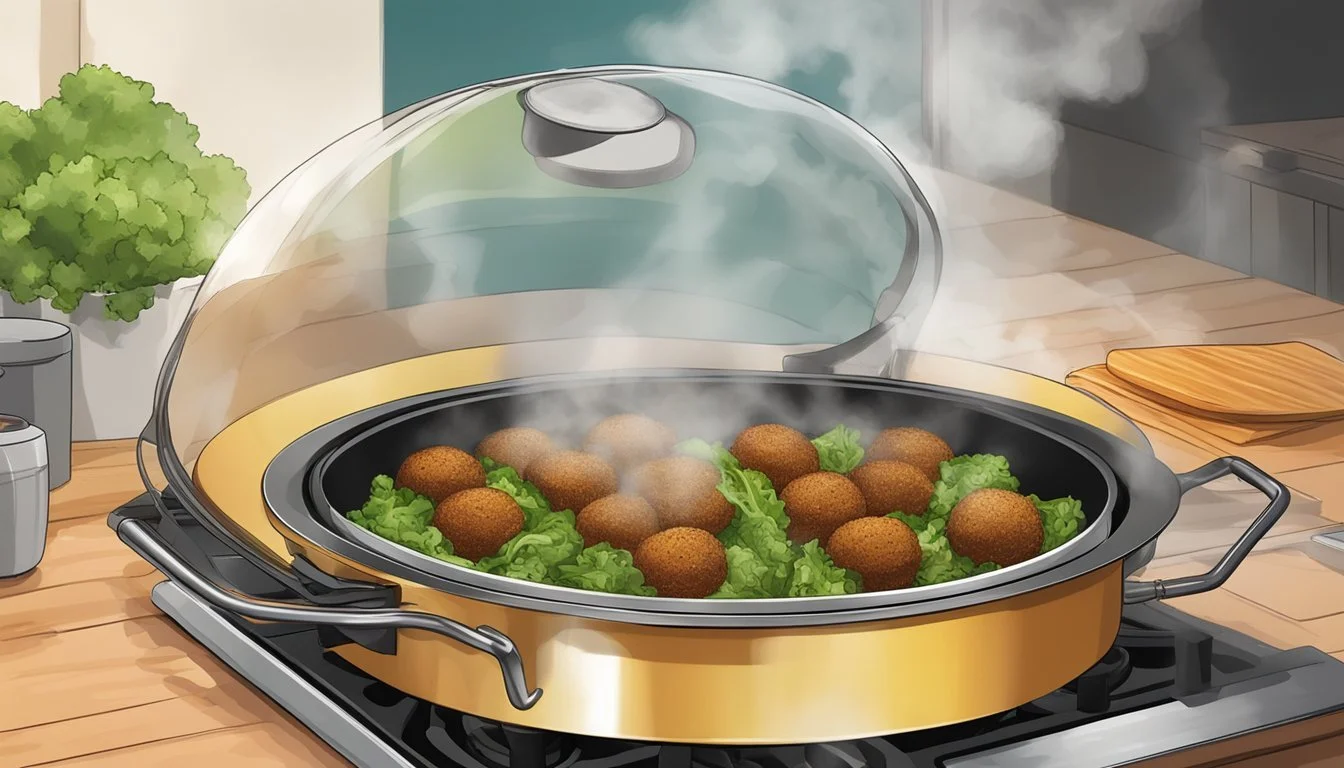How to Reheat Falafel Wrap Perfectly Every Time
Reheating a falafel wrap can sometimes be a challenge, but with the right techniques, you can enjoy its fresh and delicious flavors once again. Whether you're dealing with leftover falafel or a pre-prepared wrap, maintaining the crispness of the falafel while keeping the wrap soft is key. The best way to reheat a falafel wrap is by carefully balancing heat and moisture to revive its texture and taste.
Using an oven or an air fryer can help achieve this balance. For the oven, preheat it to 350°F, wrap the falafel in aluminum foil to prevent it from drying out, and warm it for about 10 minutes. On the other hand, an air fryer preheated to 350°F can heat the falafel in just a few minutes, preserving its crispy texture.
When reheating, ensure your falafel wrap doesn't get soggy. Avoid microwaving as it typically results in a soft, less appetizing wrap. Refreshing your falafel wrap correctly allows you to savor the delightful combination of warm, crispy falafel and fresh, soft wrap, making it almost as good as the first time.
Understanding Falafel
Falafel is a nutritious and popular Middle Eastern dish that has gained global recognition. Made primarily from chickpeas or fava beans, these small patties or balls are rich in protein and fiber, making them a great option for vegetarians and those seeking healthy street food alternatives.
Origins and Popularity
Falafel originates from the Middle East, with roots tracing back to Egypt, where it was initially made with fava beans. It has spread across the region, becoming a staple in Middle Eastern cuisine. Today, falafel is enjoyed worldwide, often served in wraps, pita bread, or on its own as a snack.
Its popularity stems from its versatility and the flavorful combination of herbs and spices used in its preparation. Falafel is a common street food, easily accessible and enjoyed by many for its taste and nutritional value.
Composition and Nutritional Value
Traditionally, falafel is made from ground chickpeas or fava beans, combined with ingredients like onions, garlic, herbs, and spices. The mixture is formed into balls or patties and then deep-fried until crispy.
A typical falafel serving is high in protein and fiber, thanks to its chickpea or fava bean base. It also provides essential vitamins and minerals, making it a nutritious choice. For vegetarians, falafel serves as an excellent protein source, contributing to a balanced diet.
Falafel can be included in various dishes, enhancing the nutritional profile of meals while offering a delicious and satisfying option.
Proper Storage Techniques
Proper storage of falafel wraps ensures they remain fresh and flavorful for later consumption. Refrigeration and freezing are effective methods to preserve falafel wraps while preventing spoilage and maintaining taste.
Refrigeration Methods
To refrigerate falafel wraps, first allow any freshly-made falafel to cool completely at room temperature. This step helps avoid condensation inside the storage container.
Wrap each falafel wrap tightly in aluminum foil or plastic wrap to keep air out. Place the wrapped falafels into an airtight container to prevent absorbing moisture or odors from other foods in the refrigerator.
Avoid refrigerating falafel wraps for more than 3-4 days to maintain optimal freshness and prevent the growth of bacteria. Additionally, check the refrigerator's temperature to ensure it remains at or below 40°F.
Freezing and Thawing Falafel
Freezing leftover falafels offers a convenient long-term storage solution. Start by cooling the falafels completely. Wrap each one individually in aluminum foil to protect against freezer burn.
Place the wrapped falafels into a freezer-safe airtight container or heavy-duty freezer bag. Label the container with the date to keep track of storage time. Frozen falafel wraps can remain fresh for up to 3 months.
To thaw frozen falafels, move them from the freezer to the refrigerator and let them thaw overnight. This slow thawing process helps maintain texture and flavor. When ready to eat, reheat the falafels in an oven or air fryer to restore their crispiness.
Pre-Reheating Tips
Reheating a falafel wrap properly ensures the best texture and flavor. Following these preparatory steps can make a significant difference in the final outcome.
Bringing Falafel to Room Temperature
Before reheating, allow the falafel to reach room temperature. This step is crucial for even heating and helps maintain their texture.
To achieve this, remove the falafel wrap from the refrigerator and let it sit on the counter for about 15-20 minutes. This not only speeds up the reheating process but also prevents the falafel from becoming overly dry or soggy during warming.
Assessing Moisture Content
Check the moisture content of the wrap ingredients. Falafel and the surrounding ingredients, like fresh vegetables and sauces, can absorb or release moisture differently.
Identify any parts that seem too soggy or dry. If the falafel balls appear too dry, lightly mist them with water or a thin layer of olive oil to prevent dryness during reheating.
Conversely, if the wrap seems overly moist, consider patting it dry with a paper towel. This helps to avoid a soggy texture after reheating, preserving the crispness of the falafel and the freshness of other ingredients.
Reheating Methods Overview
Reheating falafel wraps requires careful consideration to maintain their crispy exterior and moist interior. Each method varies in terms of time, texture, and convenience, offering unique benefits to achieve the best result.
Oven Method
The oven method ensures even heating and a crisp exterior. Preheat the oven to 350°F (175°C). Wrap the falafel in aluminum foil to retain moisture. Place the wraps on a baking sheet and heat for 15-20 minutes.
This method is ideal for those looking to keep the falafel's crunch intact while ensuring they are cooked evenly throughout.
Microwave Method
The microwave offers a quick reheating option but may compromise the falafel's crispiness. Wrap the falafel in a damp paper towel and place it on a microwave-safe plate. Heat on medium power for 1-2 minutes.
Check for even reheating and avoid overcooking as it can make the wrap soggy.
Stovetop Method
Using a stovetop ensures a crispy finish. Heat a skillet or cast iron pan over medium heat. Lightly grease the pan and place the falafel wrap inside. Cook for about 2-3 minutes on each side.
This method offers a flavorful, crispy exterior while preventing the interior from drying out.
Air Fryer Method
The air fryer is excellent for a quick and crispy result. Preheat the air fryer to 375°F (190°C). Place the falafel wrap inside without overcrowding. Heat for 5-7 minutes, shaking the basket halfway through.
This method delivers a crunchy texture efficiently while retaining moisture.
Toaster Oven Method
A toaster oven combines the benefits of an oven and a microwave. Preheat to 350°F (175°C). Wrap the falafel in aluminum foil and place it inside. Heat for about 10-15 minutes.
This method offers convenience with even cooking and a crispy finish, ideal for smaller portions.
Achieving the Ideal Texture and Flavor
Enhancing the texture and flavor of reheated falafel wraps involves using the right oils and herbs, as well as carefully controlling the reheating duration. These elements are crucial to retaining the crispiness and deliciousness of the falafel.
Using Oils and Herbs
Using a small amount of added oil can make a significant difference when reheating falafel wraps. Brush the falafel with a thin layer of olive oil or a mixture of olive oil and garlic to help maintain a crispy exterior.
Incorporating fresh herbs and spices can also elevate the flavor profile. Parsley, cumin, coriander, and minced garlic can be sprinkled over the falafel before reheating to infuse the wraps with a burst of freshness. Additionally, a light spray of water can help retain the moisture, preventing the falafel from becoming overly dry.
Controlling the Reheating Duration
The duration of reheating is critical for achieving the perfect texture. Preheat the oven to 350°F and wrap the falafel loosely in aluminum foil to prevent them from drying out. Heat them for about 5-10 minutes, ensuring they are crispy on the outside while maintaining a moist, flavorful interior.
If reheating on a stove, use a skillet with a lid. Heat on medium for about 5 minutes, flipping halfway through. This method strikes a balance between achieving a crunchy texture and preserving the inherent flavors.
Avoid overheating as it can lead to a burnt and dried-out falafel which will lack the desired freshness and flavor.
Serving Reheated Falafel
For a delightful meal, consider transforming your reheated falafel into a flavorful wrap or sandwich, and pair it with complementary side dishes for a complete Middle Eastern experience.
Wrap and Sandwich Ideas
Reheated falafel wraps and sandwiches provide a versatile meal option. Using pita bread or flatbreads makes the assembly process easy.
Arrange the falafel in the center of the bread and add fresh vegetables like shredded lettuce, diced tomatoes, and sliced cucumbers for a refreshing crunch. To enhance the flavors, drizzle some tahini sauce or yogurt sauce over the falafel.
For variety, try a Mediterranean falafel wrap by including ingredients like olives, feta cheese, and red onions. In falafel sandwiches, consider adding a layer of hummus on the bread for extra flavor and moisture.
Accompaniments and Side Dishes
Serve reheated falafel with a range of side dishes to complete the meal. A crisp falafel salad featuring mixed greens, cherry tomatoes, and cucumbers pairs well and maintains the freshness of the dish.
Hummus and baba ghanoush are excellent dips that complement the falafel's flavors. For a traditional touch, tabbouleh salad with parsley, mint, bulgur, and lemon dressing is a great choice.
Adding a serving of warm pita bread alongside makes for a hearty meal. Don't forget pickled vegetables like turnip pickles or pickled cabbage to add tanginess and texture.
Additional Tips for Leftovers
Proper storage and reheating methods help maintain the texture and flavor of leftover falafel. These tips will ensure your falafel remains enjoyable even after being kept for some time.
Storing Leftover Falafel
Store falafel in an airtight container. Place a paper towel at the bottom of the container to absorb any moisture, which helps prevent sogginess.
If you plan to keep the falafel for a longer period, freeze it. Wrap individual pieces in plastic wrap or aluminum foil, then place them in a freezer-safe bag. When ready to eat, thaw them in the fridge overnight before reheating.
Always refrigerate falafel within two hours of cooking to avoid spoilage.
Revitalizing Drier Falafel
Falafel can become drier when stored. To revive it, spritz it lightly with water before reheating. This method adds moisture, ensuring it doesn't dry out.
Using an oven or air fryer can help regain some crispiness. For an oven, preheat to 350°F (175°C), and heat falafel for 5-10 minutes. For an air fryer, set it to 350°F (180°C) and heat for 2-3 minutes.
Pair reheated falafel with a fresh drizzle of tahini or hummus to enhance moisture and flavor.
Avoiding Common Reheating Mistakes
Reheating falafel in a microwave usually results in sogginess. Instead, opt for an oven or air fryer, as these methods preserve texture.
Avoid reheating large batches at once. Instead, reheat smaller batches for even heating. Align falafel pieces evenly to ensure all sides are heated uniformly.
Also, ensure the falafel is not over-reheated, as this can lead to a tough and chewy texture. Always check the temperature midway through reheating to avoid this issue.







